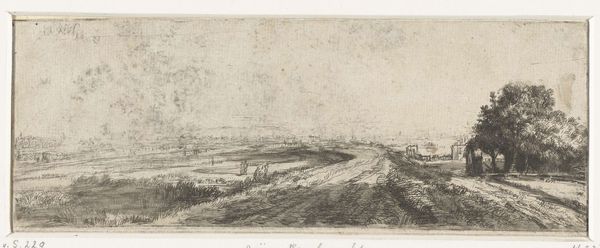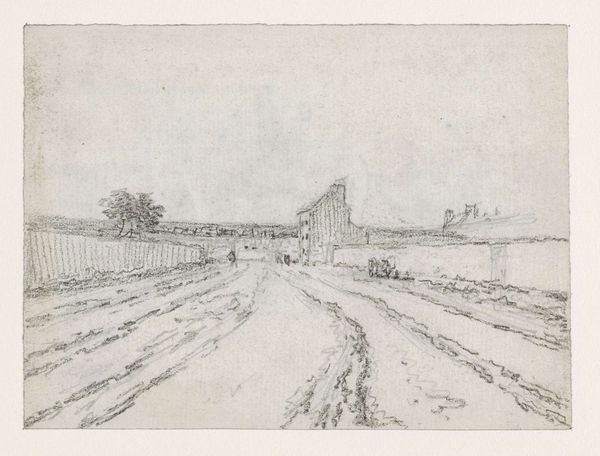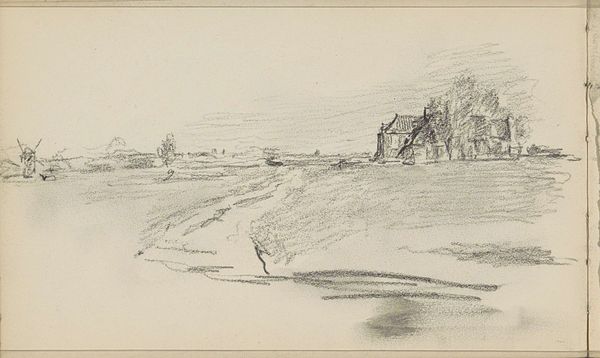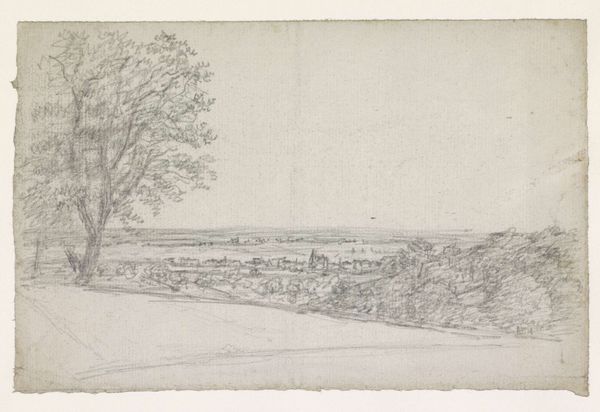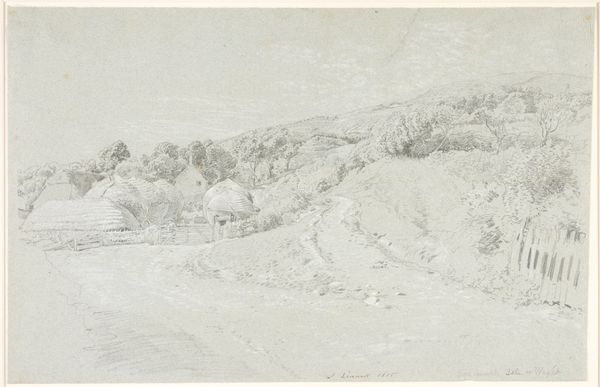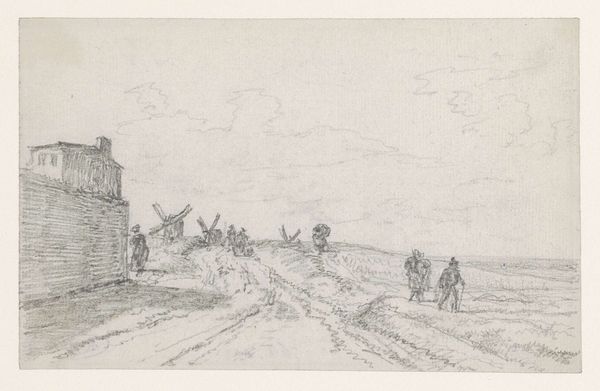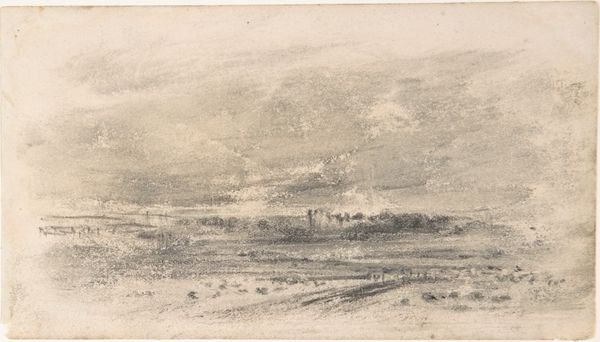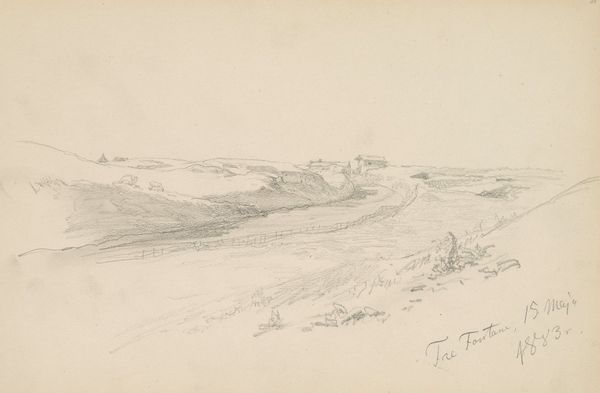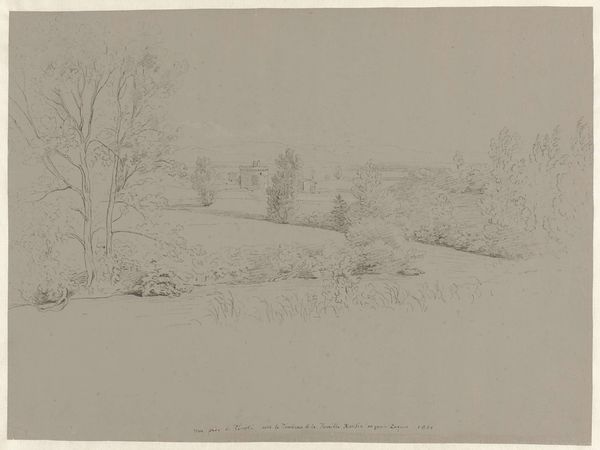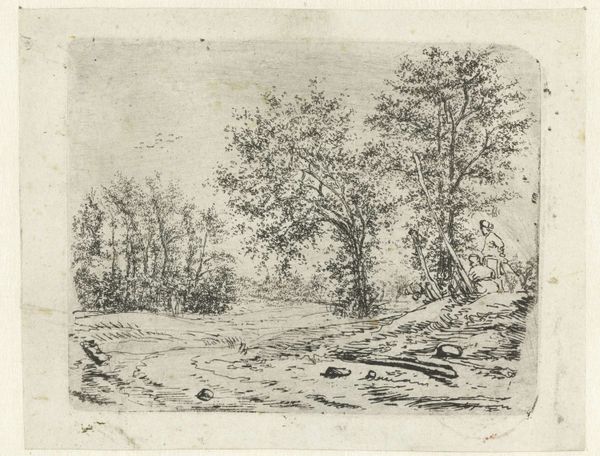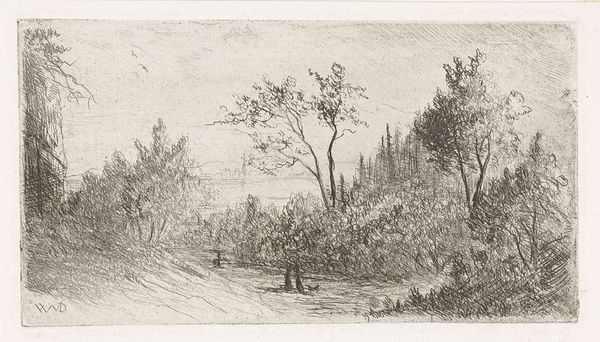
View of the Village of Almkerk, with Huis Altena on the Left c. 1646 - 1647
0:00
0:00
drawing, pencil, graphite
#
drawing
#
dutch-golden-age
#
pencil sketch
#
landscape
#
pencil
#
graphite
#
cityscape
#
realism
Dimensions: height 195 mm, width 333 mm
Copyright: Rijks Museum: Open Domain
Curator: This drawing offers us a glimpse into the 17th-century Dutch countryside. The Rijksmuseum holds this work, “View of the Village of Almkerk, with Huis Altena on the Left,” created around 1646-1647 by Roelant Roghman. It's rendered in graphite, a rather humble medium for such a tranquil scene. Editor: Tranquil is one word for it. I immediately notice the linear perspective, directing the eye down a road, bisecting fields. The pencil sketch creates an almost austere feeling. The subtle shading gives depth but somehow, there's a striking simplicity about it all. Curator: Roghman was deeply influenced by the artistic landscape and the socio-economic realities of the Dutch Golden Age. We see the importance of topographical studies, almost like records, particularly for properties and landscapes. The drawing itself becomes a document of its time. It depicts the estate Huis Altena. Consider that many Dutch artists at the time received commissions to accurately represent architecture in landscape. Editor: True, the structure on the left is quite detailed and looks rather grim for this serene view, and if you follow the sightline to the horizon, note the repetition of similar dark forms, a pattern echoed elsewhere, like the shrubbery that lines the road. Curator: Precisely, these landscapes were embedded within complex systems of land ownership and social hierarchies. The sketch shows how visual representation could serve power. It is an idealized record and promotes cultural values by showcasing estates with farmland and their aesthetic integration into a pastoral countryside. This also reflects the growing wealth of the merchant class. Editor: Looking closely, the handling of light intrigues me, or lack of strong chiaroscuro effects. This reinforces the scene’s dreamlike atmosphere, focusing the attention to how forms interact with negative space to organize an open, flat land. I wonder if we aren't interpreting an aesthetic judgement onto a mundane document. Curator: Art, as you know, does not exist in a vacuum, right? So many drawings like these end up in collections and institutions that frame our reception of art and history, especially one that reflects not only what, but also whom the land belongs to. Editor: It really emphasizes the flat land—its emptiness—perhaps we can interpret that nothingness through negative forms and structural division and, perhaps too, what it means about place, wealth and value during that historical time.
Comments
No comments
Be the first to comment and join the conversation on the ultimate creative platform.

